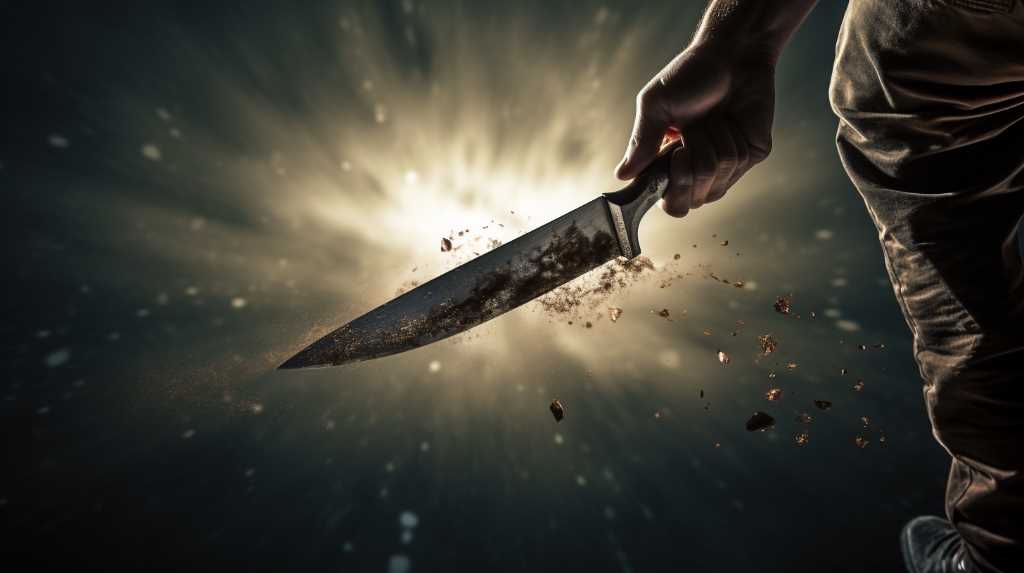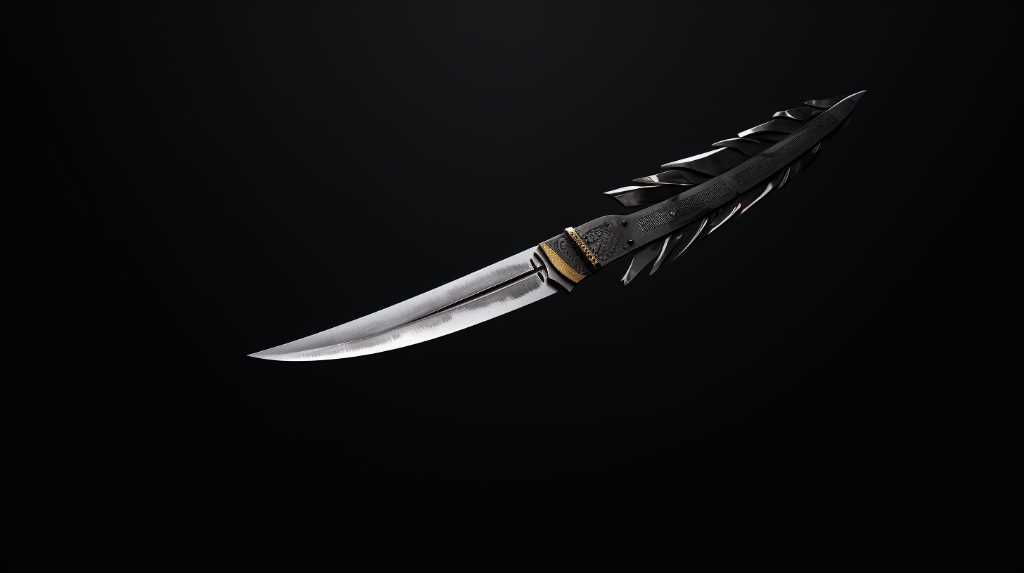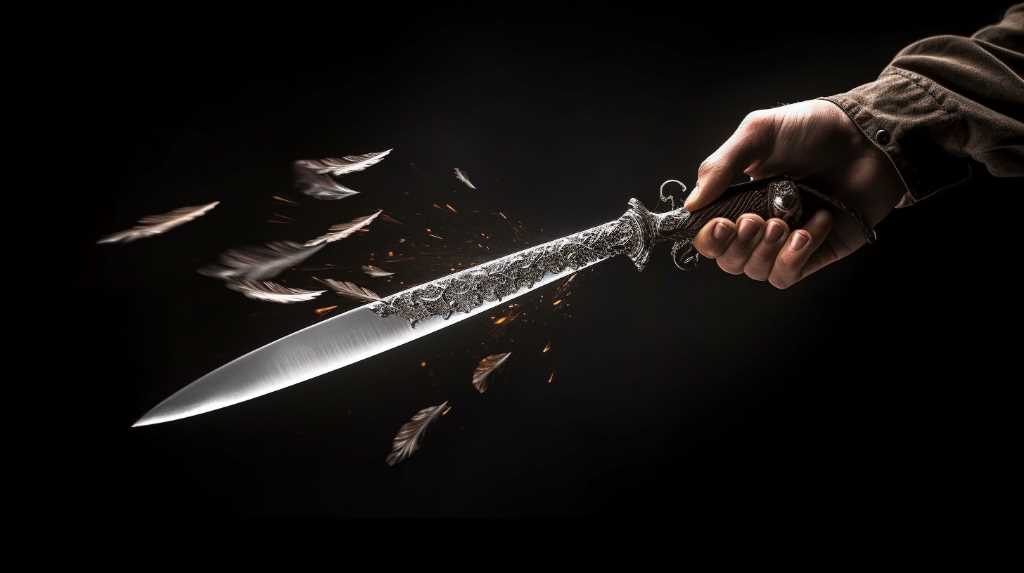
When it comes to throwing knives, achieving accuracy and control is paramount. One key factor that contributes to this is the balance of the throwing knife.
Imagine a tightrope walker gracefully navigating their way across a thin wire, relying on perfect balance to maintain their poise and precision. Similarly, a throwing knife requires optimal balance to ensure accurate rotation, control, and consistency in its flight path.
In this article, we will delve into the importance of balance in achieving mastery of the art of throwing knives.
Key Takeaways
- Achieving pinpoint accuracy relies on the precise balance of the throwing knife.
- Balanced weight distribution influences the rotation and stability of the knife's trajectory.
- Balance directly influences control and precision in executing throwing techniques.
- Proper balance ensures a smooth and controlled release, enhancing control and targeting accuracy.
The Role of Balance in Achieving Accuracy

Achieving pinpoint accuracy in throwing knives heavily relies on the precise balance of the blade, as even the slightest deviation can significantly impact the trajectory and ultimately the success of the throw.
The balance of a throwing knife refers to the distribution of weight along its length. A well-balanced knife ensures that the weight is evenly distributed, enabling a smooth, controlled motion when thrown. This allows the knife to rotate consistently, minimizing the effects of wind resistance and other external factors.
The balance point of a throwing knife is typically located at the center of the blade, ensuring equal weight distribution on both ends. This allows for a more predictable and accurate flight path, increasing the chances of hitting the target with precision.
How Balance Affects the Rotation of a Throwing Knife

Balancing the weight distribution of a throwing knife influences the rotation and stability of its trajectory, allowing for a controlled and accurate throw. The balance point of a throwing knife is crucial in determining its flight path and ensuring that it hits the target with precision.
When the weight is evenly distributed along the length of the knife, it rotates smoothly and maintains stability in the air. This balance prevents the knife from wobbling or veering off course during its flight, making it easier for the thrower to predict and adjust the trajectory as needed.
Additionally, a well-balanced knife reduces the chances of it tumbling or flipping in mid-air, further enhancing its accuracy. Achieving proper balance in a throwing knife requires meticulous craftsmanship and attention to detail, resulting in a weapon that offers liberation through precise and controlled throwing techniques.
The Impact of Balance on Control in Throwing Knife Techniques

Significantly, the balance of a throwing knife directly influences the thrower's control and precision in executing various throwing techniques. Achieving the right balance in a throwing knife is crucial for a successful throw. Here are three reasons why balance plays such a vital role:
- Control: A well-balanced throwing knife allows the thrower to have maximum control over its flight. The weight distribution ensures that the knife follows a predictable path, making it easier to aim accurately.
- Precision: Balance affects the rotation of the knife in the air. An evenly balanced knife spins smoothly, resulting in a consistent and predictable rotation. This rotation is crucial for hitting the target accurately.
- Consistency: A balanced knife ensures that each throw feels familiar and consistent. This muscle memory allows the thrower to develop a consistent throwing technique, leading to improved accuracy over time.
Understanding How Balance Influences the Flight Path of a Throwing Knife

The weight distribution of a throwing knife, combined with proper balance, directly impacts the flight path and accuracy of each throw. Achieving the right balance in a throwing knife is crucial for achieving optimal performance and accuracy.
When a throwing knife is properly balanced, it allows for a smooth and controlled release, ensuring that it travels along the desired flight path with minimal deviation. The weight distribution of the knife affects its stability during flight, as well as its ability to maintain a consistent trajectory.
A well-balanced throwing knife also enhances the thrower's control over the weapon, allowing for precise targeting and increasing the likelihood of hitting the intended target. Therefore, understanding the importance of balance in a throwing knife is essential for those looking to improve their throwing technique and accuracy.
The Importance of Balance in Achieving Consistency in Throwing Knife Throws

Achieving proper balance is crucial for consistently accurate throwing knife throws. Balance is not only essential for the successful release of the knife but also for controlling its flight path. Here are three reasons why balance is important in achieving consistency in throwing knife throws:
- Accuracy: A well-balanced throwing knife allows for a more precise release, ensuring that it follows a straight trajectory towards the target. Without proper balance, the knife may wobble or spin unpredictably, leading to inaccurate throws.
- Control: Balanced knives are easier to control during the throwing motion. The weight distribution plays a vital role in maintaining stability and reducing any unwanted movements that may affect the accuracy of the throw.
- Repeatable Technique: When the knife is properly balanced, it becomes easier to replicate the throwing technique consistently. This allows throwers to develop muscle memory and improve their overall accuracy over time.
Frequently Asked Questions
What Are Some Common Materials Used to Achieve Balance in Throwing Knives?
Common materials used to achieve balance in throwing knives include steel, aluminum, and titanium. Balance is important as it affects the accuracy, rotation, and stability of the knife during flight, ultimately impacting the success of the throw.
Can the Balance of a Throwing Knife Be Adjusted or Customized to Fit a Thrower's Preferences?
The balance of a throwing knife can indeed be adjusted or customized to suit a thrower's preferences. This allows for enhanced accuracy and control, ensuring that the knife flies smoothly and accurately towards its target.
Does the Balance of a Throwing Knife Affect Its Durability or Longevity?
The balance of a throwing knife does not directly affect its durability or longevity. However, a well-balanced knife can improve accuracy and reduce strain on the thrower, leading to better performance and potentially longer lifespan.
Are There Any Specific Techniques or Drills That Can Help Improve Balance in Throwing Knife Throws?
Improving balance in throwing knife throws is crucial for accuracy and consistency. Various techniques and drills can enhance balance, such as focusing on body alignment, grip strength, and weight distribution. Mastering these skills ensures precise and effective throws.
Can the Balance of a Throwing Knife Impact the Force or Power Behind a Throw?
The balance of a throwing knife plays a crucial role in determining the force and power behind a throw. A well-balanced knife allows for better control and accuracy, resulting in a more effective and successful throw.
Conclusion
In conclusion, balance plays a crucial role in the effectiveness of throwing knives. It directly impacts accuracy, rotation, control, flight path, and consistency in knife throws.
Achieving the right balance ensures precise and controlled throws, resulting in improved accuracy and desired outcomes. The importance of balance in throwing knives cannot be overstated, as it significantly enhances the overall performance and success of the technique.

